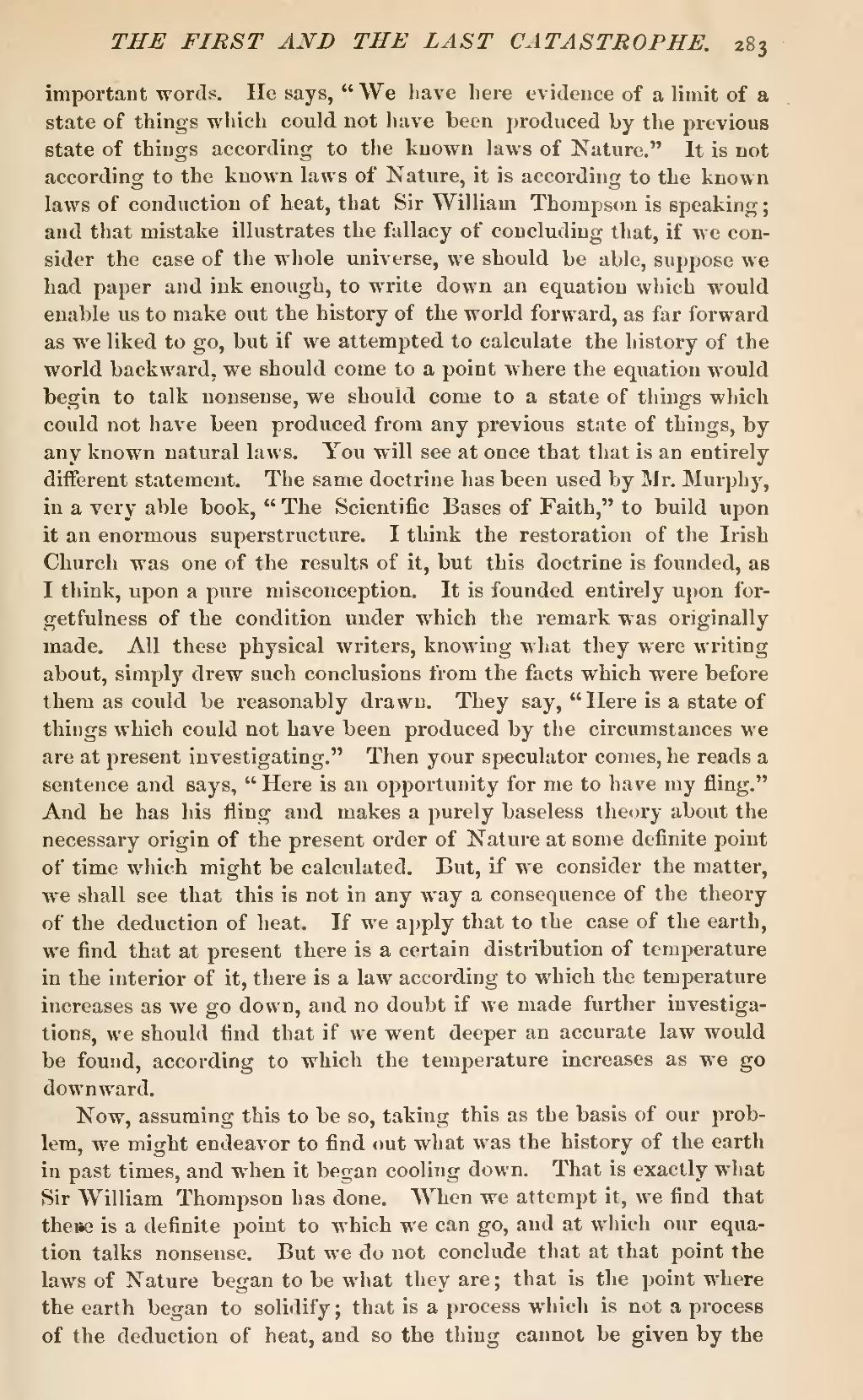important words. He says, "We have here evidence of a limit of a state of things which could not have been produced by the previous state of things according to the known laws of Nature." It is not according to the known laws of Nature, it is according to the known laws of conduction of heat, that Sir William Thompson is speaking; and that mistake illustrates the fallacy of concluding that, if we consider the case of the whole universe, we should be able, suppose we had paper and ink enough, to write down an equation which would enable us to make out the history of the world forward, as far forward as we liked to go, but if we attempted to calculate the history of the world backward, we should come to a point where the equation would begin to talk nonsense, we should come to a state of things which could not have been produced from any previous state of things, by any known natural laws. You will see at once that that is an entirely different statement. The same doctrine has been used by Mr. Murphy, in a very able book, "The Scientific Bases of Faith," to build upon it an enormous superstructure. I think the restoration of the Irish Church was one of the results of it, but this doctrine is founded, as I think, upon a pure misconception. It is founded entirely upon forgetfulness of the condition under which the remark was originally made. All these physical writers, knowing what they were writing about, simply drew such conclusions from the facts which were before them as could be reasonably drawn. They say, "Here is a state of things which could not have been produced by the circumstances we are at present investigating." Then your speculator comes, he reads a sentence and says, "Here is an opportunity for me to have my fling." And he has his fling and makes a purely baseless theory about the necessary origin of the present order of Nature at some definite point of time which might be calculated. But, if we consider the matter, we shall see that this is not in any way a consequence of the theory of the deduction of heat. If we apply that to the case of the earth, we find that at present there is a certain distribution of temperature in the interior of it, there is a law according to which the temperature increases as we go down, and no doubt if we made further investigations, we should find that if we went deeper an accurate law would be found, according to which the temperature increases as we go downward.
Now, assuming this to be so, taking this as the basis of our problem, we might endeavor to find out what was the history of the earth in past times, and when it began cooling down. That is exactly what Sir William Thompson has done. When we attempt it, we find that there is a definite point to which we can go, and at which our equation talks nonsense. But we do not conclude that at that point the laws of Nature began to be what they are; that is the point where the earth began to solidify; that is a process which is not a process of the deduction of heat, and so the thing cannot be given by the

